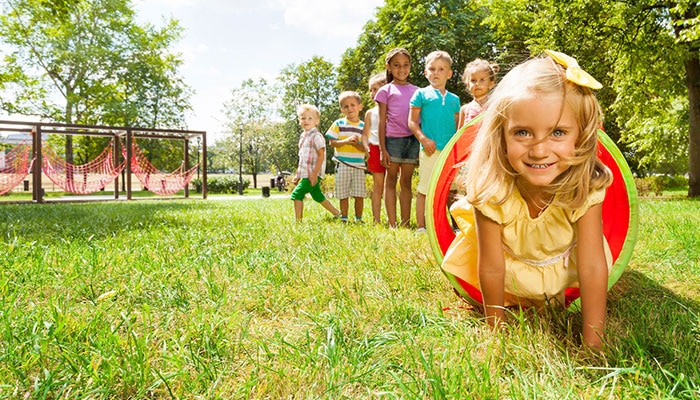While we believe that the books and resources recommended may be of value to you, keep in mind that these are suggestions only and you must do your own due diligence to determine whether the materials are appropriate and suitable for your use. PNC has no sponsorship or endorsement agreement with the authors or publishers of the materials listed.

TRANSPORTATION
Creating Pathways Through Movement
Children will explore different ways of moving from place to place.

Lesson Objective
Children will explore the concept of pathways, using straight, curved, and zigzag pathways to move from place to place.
Art
What You'll Need
Note: This is a movement activity that is great for transitions and is best taught prior to the lesson, All Aboard the Movement Train!
- Large space – enough for children to move safely without touching each other
- Music – any movement music (see Lesson Tips for suggestions)
- Audio device – for playing music
- Drum
- Tape
- Images of different pathways (straight, curved, zigzag—see Lesson Tips)
What To Do
Note: Before beginning the lesson, put tape on the floor to make pathways around the room. Include straight, curved, and zigzag paths.
- Begin a discussion about the word travel; ask children to share the places they have traveled, both in the community (like the grocery store) and outside the community.
- Tell them that traveling involves movement, and movement is a part of transportation. All vehicles such as cars, trucks, boats, airplanes, and buses move. Our bodies move too, and movement is part of dancing. When we dance, we can move our bodies from place to place as we move along a pathway.
- Show pictures of the different pathways and discuss.
- Have the children trace a straight pathway in the air using a finger. Have them try drawing the pathway using their arm, shoulder, nose, and toes. Repeat with curved and zigzag pathways. Tell them that they will be moving through pathways around the room using different movements.
- Discuss the important rules of dance lessons (see Lesson Tips), and have the children stand up to perform the steps of the warm-up:
- Breathing – Take several deep breaths in, and make a train whistle sound while breathing out slowly.
- Touch – Pretend the fingers are cars moving at different speeds and pathways along the body.
- Get Moving – Do several movements that will get the blood flowing:
- Stretch “airplane wings” (arms and legs) wide, and then bring them in for a landing (curl into a ball).
- Hide the head, and then peek out to look for school bus, train, etc.; repeat.
- Bicycle legs – laying on the back, move legs as if riding a bicycle. Then, keeping the lower body still, move the arms as if rowing a boat.
- Pretend to open and shut the door of a car or bus as you open one side of the body and then the other. Airplane zoom – while sitting or standing with arms and legs wide, twist and zoom opposite hand to foot.
- Imagine you are in a car zooming around and around while you turn. Then, the brakes make you stop before going in the other direction.
- Choose a locomotor movement, such as tiptoe, gallop. skip, march, etc., and demonstrate how to move along the pathways doing that movement.
- Play some music, and keep time using a drum; have the children follow the pathways.
- Have the children repeat moving through the pathways using different movements.
Resources
Home School Resources
Home educators: use these printable lesson PDFs to teach this lesson to your home schoolers. They're available in English and Spanish.
Content Provided By
Common Core State Standards Initiative – These lessons are aligned with the Common Core State Standards ("CCSS"). The CCSS provide a consistent, clear understanding of the concepts and skills children are expected to learn and guide teachers to provide their students with opportunities to gain these important skills and foundational knowledge [1]. Visit the CCSS


